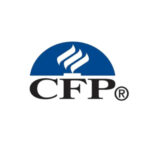Maximizing Your Social Security Benefits:
Advanced Strategies That Make a Difference
We Serve people in Scottsdale, AZ, Brookfield & Johnson Creek Wisconsin
Maximizing Your Social Security Benefits Strategies

Getting the most out of your Social Security benefits requires more than just deciding when to claim.
There are dozens of advanced strategies that can add thousands of dollars to your lifetime Social Security income—if you know how to use them.
From optimizing your earnings record to coordinating benefits with your investment withdrawals, these sophisticated techniques can significantly boost your retirement security.
At Family Wealth Advisors, we help clients in Scottsdale, Arizona, Brookfield, and Johnson Creek, Wisconsin implement these advanced strategies as part of their comprehensive retirement planning.
Our advisors—Jeffrey J. Biro, W. Ryan Zenk, and Michael Wendt—work with individuals and couples who want to go beyond basic claiming strategies.
We’ll help you understand complex rules like the Windfall Elimination Provision, coordinate your Social Security with pension income, and structure your retirement account withdrawals to protect your benefits from unnecessary taxation.
Advanced Benefit Optimization Strategies
Once you understand the basics of Social Security timing, there are several advanced techniques that can further maximize your benefits over your lifetime.
Optimizing Your Earnings Record for Higher Benefits
Your Social Security benefits are calculated using your highest 35 years of earnings, adjusted for inflation.
If you have some low-earning years in your record, replacing them with higher earnings can boost your benefits significantly.
Strategies to improve your earnings record:
- Review your Social Security statement annually to catch any errors in your earnings history
- Consider working a few more years if you have low-earning years that could be replaced
- Maximize earnings in your final working years through bonuses, consulting, or part-time work
- Coordinate with your spouse to optimize both of your earnings records
Even small increases in your earnings record can compound over many years of retirement, making this strategy particularly valuable for people still in their peak earning years.
Understanding Benefit Recalculation When Working in Retirement
If you continue working while receiving Social Security, your benefits may be recalculated annually to reflect your new earnings.
This can be a powerful way to increase your monthly payments even after you’ve started claiming.
How it works:
- Before full retirement age: You may face earnings limits that temporarily reduce benefits, but you’ll get credit for those reductions later
- After full retirement age: No earnings limits apply, and higher earnings automatically increase your future benefits
- Automatic recalculation: The Social Security Administration reviews your record each year and increases your benefits if your new earnings are higher than previous years
This strategy works especially well for people who can earn significant income in consulting or part-time roles during early retirement.
Maximizing Cost-of-Living Adjustments
Cost-of-living adjustments (COLAs) are applied to your Social Security benefits each year to help them keep up with inflation.
The key to maximizing COLAs is understanding that they’re applied to your benefit amount—so a higher base benefit receives larger dollar increases.
COLA optimization strategies:
- Delay claiming to increase your base benefit before COLAs are applied
- Understand that COLAs compound over time, making early increases more valuable
- Factor COLA protection into your claiming decision—it’s another reason why higher benefits are often better than getting money sooner
For Arizona residents, COLAs are particularly valuable since the state doesn’t tax Social Security benefits, meaning you keep the full increase.
Wisconsin residents should factor in state tax implications when evaluating COLA benefits.
Tax-Smart Social Security Planning
One of the biggest surprises for many retirees is discovering that their Social Security benefits can be taxable.
Smart planning can minimize or eliminate this tax burden.
Protecting Your Benefits from Federal Taxation
Whether your Social Security benefits are taxed depends on your “combined income”—which includes your adjusted gross income, nontaxable interest, and half of your Social Security benefits.
Strategic withdrawal planning can keep you below the taxation thresholds.
Tax-efficient withdrawal sequence:
- Taxable investment accounts first: These generate less taxable income per dollar withdrawn
- Tax-deferred accounts next: Carefully manage timing to avoid pushing yourself into Social Security taxation
- Roth accounts last: These don’t count toward your combined income at all
This sequence can keep your combined income low enough that your Social Security benefits remain tax-free, potentially saving thousands of dollars annually.
Strategic Roth IRA Conversions
Converting traditional IRA funds to Roth IRAs can be a powerful strategy for protecting your Social Security benefits from taxation.
While you’ll pay taxes on the conversion, future Roth withdrawals don’t count toward your combined income.
Optimal conversion timing:
- Before claiming Social Security: Convert during lower-income years to minimize the tax impact
- During market downturns: Convert when account values are temporarily depressed
- To fill lower tax brackets: Convert just enough to stay within your current tax bracket
- Before required minimum distributions: Reduce future mandatory withdrawals from traditional accounts
This strategy is particularly effective for Wisconsin residents, where it can help minimize both federal and state taxes on Social Security benefits.
State Tax Planning: Arizona vs. Wisconsin
The difference in how Arizona and Wisconsin treat Social Security benefits creates different optimization opportunities for residents of each state.
Arizona advantages:
- No state tax on Social Security: Keep 100% of your benefits at the state level
- Focus on federal tax optimization: Concentrate planning efforts on avoiding federal taxation
- More flexibility in retirement income timing: State taxes don’t complicate withdrawal decisions
Wisconsin considerations:
Consider timing of other income: Manage total income to minimize state tax impact
Income thresholds apply: Plan carefully around state taxation limits
Coordinate federal and state strategies: Optimize for both tax systems simultaneously
Coordinating Social Security with Pensions and Other Income
For many retirees, Social Security is just one piece of their income puzzle.
Coordinating all your income sources can maximize your total retirement security.
Strategic Timing with Retirement Account Withdrawals
The sequence and timing of your retirement account withdrawals can significantly impact your Social Security benefits and overall tax burden.
Coordination strategies:
- Bridge strategy: Use retirement accounts to provide income while delaying Social Security for higher benefits
- Tax bracket management: Time withdrawals to avoid pushing Social Security benefits into taxation
- Required minimum distribution planning: Start Roth conversions early to reduce future RMDs that could affect Social Security taxation
This coordination becomes especially important as you approach age 73, when required minimum distributions from traditional retirement accounts begin.
Pension Income Integration
If you have pension income, careful coordination with Social Security can optimize your total retirement income while managing tax implications.
Integration strategies:
- Timing pension start dates: Coordinate when you begin pension payments with your Social Security claiming strategy
- Lump sum vs. monthly payments: Evaluate how pension payout options affect your overall income and Social Security taxation
- Spousal coordination: If both spouses have pensions, coordinate all four income sources (two pensions, two Social Security benefits) for optimal household income
Navigating WEP and GPO Rules
The Windfall Elimination Provision (WEP) and Government Pension Offset (GPO) can reduce Social Security benefits for people who also receive pensions from work where they didn’t pay Social Security taxes.
WEP considerations:
- Affects your own Social Security benefits if you have a pension from non-covered employment
- Reduction is limited: WEP can’t reduce your benefit by more than half of your pension amount
- Years of substantial earnings matter: Having 30+ years of substantial Social Security-covered earnings can eliminate or reduce WEP impact
GPO planning:
Timing strategies: In some cases, timing when you start your government pension can affect GPO impact
Affects spousal and survivor benefits based on government pensions
Two-thirds reduction rule: GPO typically reduces spousal/survivor benefits by two-thirds of your government pension
Maximizing Family and Household Benefits
Social Security isn’t just about individual benefits—there are strategies to maximize total household and family income from the system.
Optimizing Total Household Social Security Income
For married couples, the goal isn’t just to maximize one person’s benefits—it’s to maximize the total Social Security income your household receives over both lifetimes.
Household optimization strategies:
- Coordinate claiming timing: Balance immediate income needs with long-term benefit maximization
- Maximize the higher earner’s benefit: This becomes the survivor benefit, so growing it helps protect the surviving spouse
- Consider longevity differences: If one spouse is likely to live significantly longer, prioritize strategies that benefit the survivor
- Factor in cost-of-living adjustments: Higher base benefits receive larger dollar increases from COLAs
Child and Dependent Benefits
Families with dependent children or disabled adult children may be eligible for additional Social Security benefits that can significantly boost household income.
Child benefit opportunities:
- Children under 18: Can receive up to 50% of your Primary Insurance Amount
- Children 18-19 in high school: Benefits can continue through graduation
- Disabled adult children: May be eligible for benefits throughout their lives if disabled before age 22
- Family maximum rules: Understand how the family maximum affects total benefits when multiple family members are eligible
Strategic considerations:
Planning for benefit transitions: Understand how household income will change when children age out of benefits
Timing your claim: Starting your benefits earlier enables child benefits, but reduces your long-term benefit
Spousal coordination: Sometimes it’s optimal for the lower-earning spouse to claim early to trigger child benefits
Integrating Social Security with Comprehensive Financial Planning
Maximum Social Security optimization happens when your benefits are coordinated with all aspects of your financial plan.
Investment Strategy Coordination
Your investment approach should complement your Social Security strategy, not work against it.
Investment coordination principles:
- Bridge funding: Ensure you have adequate investments to fund retirement if you’re delaying Social Security
- Risk management: Social Security provides inflation-protected income, allowing for more growth-oriented investments elsewhere
- Tax location strategies: Place tax-inefficient investments in accounts that don’t affect Social Security taxation
- Withdrawal sequencing: Coordinate investment withdrawals with Social Security to minimize taxes
Longevity and Income Planning
Social Security provides valuable longevity insurance—benefits that continue for your entire life.
This should influence how you structure the rest of your retirement income.
Longevity planning strategies:
- Maximize guaranteed income: Social Security and any pensions provide the foundation for longevity protection
- Plan for increasing expenses: Healthcare costs typically rise with age, making higher Social Security benefits more valuable later in retirement
- Survivor income planning: Ensure the surviving spouse will have adequate guaranteed income from Social Security
Estate Planning Integration
While Social Security benefits generally can’t be inherited, your claiming strategy affects your estate planning in several ways.
Estate planning considerations:
Charitable giving coordination: Higher Social Security income can support charitable giving strategies using other assets
Preserve other assets: Higher Social Security benefits mean you can preserve more of your investment accounts for heirs
Roth conversion opportunities: Using Social Security for living expenses can free up other funds for tax-free Roth conversions
Survivor benefit planning: Ensure your spouse’s Social Security benefits will provide adequate income, reducing pressure on other estate assets
Your Social Security Maximization Team
Implementing these advanced strategies requires expertise in both Social Security rules and comprehensive financial planning.
Our advisors bring this specialized knowledge to clients across Arizona and Wisconsin.
Scottsdale Expertise: Jeffrey J. Biro and W. Ryan Zenk
Jeffrey J. Biro specializes in advanced Social Security optimization strategies for Arizona residents.
He helps clients take advantage of Arizona’s tax-friendly environment while implementing sophisticated benefit maximization techniques.
W. Ryan Zenk brings deep expertise in coordinating Social Security with complex financial situations, including business ownership, multiple retirement accounts, and estate planning considerations.
Together, they help Scottsdale families implement comprehensive strategies that maximize Social Security benefits while optimizing their overall financial plan.
Brookfield Guidance: W. Ryan Zenk
In Brookfield, W. Ryan Zenk applies his extensive knowledge to help Wisconsin residents navigate both the opportunities and challenges of Social Security optimization in a state that taxes benefits.
Ryan’s approach focuses on sophisticated tax planning strategies that coordinate Social Security with other retirement income sources to minimize the overall tax burden while maximizing lifetime benefits.
Johnson Creek Specialization: Michael Wendt
Michael Wendt provides personalized Social Security maximization strategies for Johnson Creek residents, with particular expertise in coordinating benefits for clients with government pensions or complex family situations.
Michael’s detailed analysis helps clients understand advanced rules like WEP and GPO, while implementing strategies that optimize benefits for the entire family unit.
Frequently Asked Questions
Here are answers to common questions about advanced Social Security optimization strategies.
How can I optimize my Social Security benefits if I’m still working?
Continuing to work can boost your Social Security benefits through annual recalculation. If your current earnings are higher than those in previous years in your record, your benefits will automatically increase. Focus on maximizing earnings in your peak years, and consider working a few extra years if you have low-earning years that could be replaced in your benefit calculation.
What’s the best way to coordinate Social Security with my retirement account withdrawals?
Use a strategic withdrawal sequence: start with taxable investment accounts, then carefully manage withdrawals from tax-deferred accounts to avoid pushing your Social Security benefits into taxation. Save Roth IRA withdrawals for last, as they don’t count toward the income thresholds that make Social Security taxable. Consider Roth conversions during low-income years to create more tax-free income for later.
How do Roth IRA conversions help with Social Security planning?
Roth conversions create tax-free income that doesn’t count toward the thresholds that make Social Security benefits taxable. By converting traditional IRA funds to Roth accounts during low-income years (especially before claiming Social Security), you create a source of retirement income that won’t increase your combined income and potentially trigger Social Security taxation.
How should I coordinate Social Security with my pension?
Coordination depends on your specific situation, but generally involves timing when you start each income source to optimize taxes and cash flow. Be aware of special rules like the Windfall Elimination Provision (WEP) and Government Pension Offset (GPO) if your pension comes from work where you didn’t pay Social Security taxes. These rules can reduce your Social Security benefits, requiring careful planning to minimize their impact.
What strategies can married couples use to maximize total household Social Security income?
Couples should coordinate their claiming strategies to maximize total lifetime benefits. This often involves having the higher earner delay benefits until age 70, while the lower earner may claim them earlier. Focus on maximizing the higher earner’s benefit since it becomes the survivor’s benefit. Consider child benefits if you have dependent children, and factor in both spouses’ life expectancies when making timing decisions.
How do the different state tax treatments in Arizona and Wisconsin affect Social Security planning?
Arizona’s tax-free treatment of Social Security benefits simplifies planning and makes the benefits more valuable. Wisconsin’s taxation of benefits above certain income thresholds requires more sophisticated coordination with other retirement income sources. Wisconsin residents should focus more heavily on strategies that manage total income levels, while Arizona residents can concentrate primarily on federal tax optimization.
Why Choose FWA
The FWA Team
Meet the Advisors Who Put Your Interests First

Jeffrey J. Biro, CEP, RFC
President

W. Ryan Zenk, JD, CFP®
Chief Executive Officer

John Oxenhandler
VP of Investment Operations

Mike Wendt
Registered Representative

Debbie Basom
New Client Services Director





